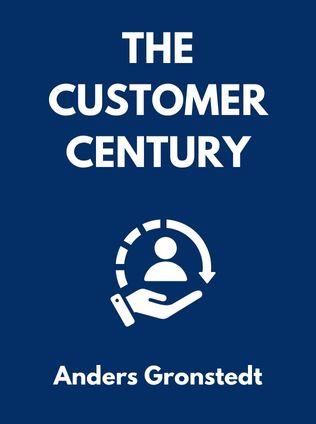
The Customer Century
Lessons from World Class Companies in Integrated Marketing and Communications
By Anders Gronstedt Ph.D.
Published 12/2011
About the Author
Anders Gronstedt, Ph.D., is the president of The Gronstedt Group, a Colorado-based "think and do tank" in integrated marketing and communications that consults and conducts training programs for companies around the world. A world-renowned speaker, author, and management consultant, Gronstedt is a former professor of integrated marketing communications at the University of Colorado. His extensive expertise and experience in the field of integrated marketing and communications make him a leading authority on the subject.
Main Idea
In "The Customer Century," Anders Gronstedt argues that the success of an organization in the modern era hinges on how well it satisfies its customers. Moving from what he terms the "Production Century" to the "Customer Century," Gronstedt emphasizes the crucial role of integrated marketing and communications. This integration occurs across three dimensions: between the company and its customers and stakeholders, across different managerial levels, and across various business and geographic units within the company. By mastering these dimensions, organizations can achieve superior customer satisfaction and long-term success.
Table of Contents
- Integrating Communications in 3-D
- The First Dimension: Integrated External Communications
- The Second Dimension: Integrated Vertical Communications
- The Third Dimension: Integrated Horizontal Communications
- Integrating High Tech and High Touch
- Today's Marketing and Communications Tasks
- Putting It All Together
Integrating Communications in 3-D
Organizations in the Production Century often resemble a herd of fighting bulls, with departments and business units competing against each other for limited resources and attention from senior management. This internal bickering results in customer confusion and frustration. As Gronstedt writes, "Customers today are savvy, well-informed, cynical, price-conscious and empowered. They demand quality, service, customization, convenience, and speed." To thrive in the Customer Century, companies must act like a flock of geese, flying in formation towards the common goal of customer satisfaction.
Achieving this requires integrated communications, which ensures that all levels and units of the company are united and coordinated in their communication efforts. There are three dimensions to integrated communications:
- Integrated External Communications: This involves everyone in the organization in both inbound and outbound communications with customers and stakeholders.
- Integrated Vertical Communications: This type of communication facilitates forthright, frequent, and two-way communication between senior management, middle management, and other employees.
- Integrated Horizontal Communications: This integrates communication among people at different work units, departments, and countries.
All three dimensions are necessary for successfully competing in the Customer Century.
The First Dimension: Integrated External Communications
Integrated external communications are about building close customer and stakeholder relationships at all levels of the organization. This dimension starts with identifying the most important customers based on their current profit contributions and potential lifelong customer value. Once identified, customer satisfaction surveys, retention rates, complaints, inquiries, field operations, market research, and other sources of customer information are tracked and shared within the organization.
Grönstedt explains that "profitable customers are always right." Companies must harness database technology, Internet connectivity, and mass customization capabilities to identify customers with the greatest profit potential and tailor communications and services to their individual needs.
- Saturn maintains information on every one of its two million owners.
- Hewlett-Packard's central customer database includes between 6.5 and 8 million names, tracking the recentness and frequency of purchases and customer contact history.
HP believes its use of customer data translates into additional annual sales of $180 million.
Sign up for FREE and get access to 1,400+ books summaries.
You May Also Like
How To Win Friends and Influence People
The All-Time Classic Manual Of People Skills
By Dale CarnegieQuiet: The Power of Introverts
The Power of Introverts in a World That Can't Stop Talking
By Susan CainThe Lean Startup
How Today's Entrepreneurs Use Continuous Innovation to Create Radically Successful Businesses
By Eric RiesWho Moved My Cheese?
An Amazing Way to Deal with Change in Your Work and in Your Life
By Spencer Johnson, M.D.Make Your Bed
Little Things That Can Change Your Life...And Maybe the World
By William H. McRaven



















